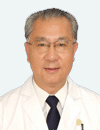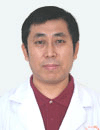参考文献:
[1] Ferlay J, Bray F, Pisani P, et al. GLOBOCAN 2002:CancerIncidence, Mortality and Prevalence Worldwide [M].Version 2.0. Lyon: IARC Press. 2004.
[2] Ferlay J, Bray F, Pisani P, et al. GLOBOCAN 2000: CancerIncidence, Mortality and Prevalence Worldwide [M].Version 1.0. Lyon: IARC Press, 2001.
[3] 肖开银. 原发性肝癌流行病学研究进展[J]. 中国普外基础与临床杂志, 2000, 7(4): 272- 274.
[4] 全国肿瘤防治研究办公室, 全国肿瘤登记中心, 卫生部疾病预防控制局. 中国部分市、县恶性肿瘤的发病与死亡. 第3 卷:1998~2002[M]. 2007. 266.
[5] 刘恩菊, 项永兵, 金凡, 等. 上海市区恶性肿瘤发病趋势分析(1972~1999 年)[J]. 肿瘤, 2004, 24(1):11- 15.
[6] Chen JG, Zhu J, Parkin DM, et al. Trends in the incidenceof cancer in Qidong, China, 1978~2002 [J]. Int JCancer, 2006, 119(6):1447- 1454.
[7] Yang HI, Lu SN, Liaw YF, et al. Hepatitis B e antigenand the risk of hepatocellular carcinoma[J]. N Engl J Med,2002, 347(3):168- 174.
[8] Ming LH, Thorgeirsson SS, Gail MH, et al. Dominant roleof hepatitis B virus and cofactor role of aflatoxin in hepatocarcinogenesisin Qidong, China [J]. Hepatology, 2002,36(5): 1214- 1220.
[9] Lu SN, Su WW, Yang SS, et al. Secular trends and geographicvariations of hepatitis B virus and hepatitis Cvirus-associated hepatocellular carcinoma in Taiwan[J]. IntJ Cancer, 2006, 119(8): 1946- 1952.
[10] Luo RH, Zhao ZX, Zhou XY, et al. Risk factors for primaryliver carcinoma in Chinese population[J]. World J Gastroenterol,2005, 11(28): 4431- 4434.
[11] Tanaka A, Uegaki S, Kurihara H, et al. Hepatic steatosisas a possible risk factor for the development of hepatocellularcarcinoma after eradication of hepatitis C virus withantiviral therapy in patients with chronic hepatitis C [J].World J Gastroenterol, 2007, 13(39):5180- 5187.
[12] Tanaka K, Tsuji I, Wakai K, et al. Cigarette smoking andliver cancer risk: an evaluation based on a systematic reviewof epidemiologic evidence among Japanese[J]. Jpn JClin Oncol, 2006, 36(7):445- 456.
[13] HF C, SC H, LY W. Does arsenic exposure increase therisk for liver cancer? [J]. J Toxicol Environ Health A,2004, 67(19): 1491- 1500.
[14] 季尚玮, 王江滨. Ⅱ型糖尿病对原发性肝癌发病的危险性分析[J]. 肝脏, 2007, 12(3):168- 170.
[15] Larsson SC, Wolk A. Overweight, obesity and risk of livercancer: a meta-analysis of cohort studies[J]. Br J Cancer,2007, 97(7):1005- 1008.
[16] Maheshwari S, Sarraj A, Kramer J. Oral contraception andthe risk of hepatocellular carcinoma[J]. J Hepatol, 2007,47(4): 506- 513.
[17] 谭盛葵, 仇小强. 原发性肝癌危险因素研究新进展[J]. 现代预防医学, 2007, 34(5):844- 846+849.
[18] 陈建国. 肝癌的病因及预防研究新进展[J]. 肿瘤防治杂志, 2003, 10(11): 1121- 1125.
[19] 陈建国, 朱健, 张永辉, 等. 江苏省启东地区1973~2002年肝癌发病率长期趋势的评价[J]. 中华医学杂志, 2005,85(43): 3052- 3056.
[20] Huang K, Lin S. Nationwide vaccination: a success storyin Taiwan[J]. Vaccine, 2000, 18 (Suppl 1): S35- 38.
[21] Moriwaki H. Prevention of liver cancer: current strategiesand future perspectives[J]. Int J Clin Oncol, 2002, 7(1):27- 31.
[22] 廖小玲, 戚中田. 丙型肝炎疫苗的研究进展[J]. 免疫学杂志, 2005, 21(3): 25- 27,31.
[23] Tanaka H, Tsukuma H, Kasahara A, et al. Effect of interferontherapy on the incidence of hepatocellular carcinomaand mortality of patients with chronic hepatitis C: a retrospectivecohort study of 738 patients [J]. Int J Cancer,2000, 87(5): 741- 749.
[24] 中华医学会肝病学分会, 中华医学会传染病分会. 丙型肝炎防治指南[J]. 中华医学杂志, 2004, 84(9): 775- 780.
[25] Tsukuma H, Tanaka H, Ajiki W, et al. Liver cancer andits prevention[J]. Asian Pac J Cancer Prev, 2005, 6 (3):244- 250.
[26] Egner PA, Wang JB, Zhu YR, et al. Chlorophyllin interventionreduces aflatoxin-DNA adducts in individuals athigh risk for liver cancer [J]. Proc Natl Acad Sci U S A,2001, 98(25): 14601- 14606.
[27] 郭婧, 李强. 肝癌的化学预防新进展[J]. 中国肿瘤临床,2006, 33(10): 597- 600.
[28] Polesel J, Talamini R, Montella M. Nutrients intake andthe risk of hepatocellular carcinoma in Italy [J]. Eur JCancer, 2007, 43(16): 2381- 2387.
[29] Bravi F, Bosetti C, Tavani A, et al. Coffee drinking andhepatocellular carcinoma risk: a meta-analysis[J]. Hepatology,2007, 46(2): 430- 435.


























